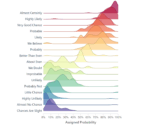In an era where decision-making requires swift insights derived from complex data, effective visualization becomes critical. Small multiples, fundamentally an information visualization technique, deliver exceptional comparative analytical capability by breaking down intricate datasets into digestible visual segments. These small, repeated visuals arranged side by side can transform overwhelming data structures into intuitive understanding. As decision-makers and analysts grapple with the ever-increasing volume of data, small multiples offer clarity, efficiency, and precision. Today, we explore the strategic application of small multiples in comparative analysis—helping you harness data-driven insights to precision-tune your organization’s strategic vision and connect technical excellence with impactful business outcomes.
Understanding Small Multiples: What and Why?
Small multiples are simplistic yet powerful visualization techniques—utilizing repeated, uniform charts placed side by side for direct visual comparison. Rather than merging multiple data sets or cramming information into a single, unwieldy chart, each “multiple” encapsulates a singular subset of the data, facilitating swift and insightful comparison across groups. This method eliminates visual clutter and significantly increases interpretability, aiding organizational leaders and technical stakeholders alike in making informed, data-driven decisions rapidly.
In an era heavily driven by big data, visualization mechanisms can quickly become cluttered or overwhelming. Small multiples confront this challenge head-on, streamlining complex relational insights into concise, comparative grids. When compared accurately through standardized axes and scale, decision-makers leverage intuitive analytical storytelling that highlights trends and outliers clearly. Furthermore, effective comparative analysis positions your organization to proactively adjust strategies—feeding directly into advanced services such as mastering demand forecasting with predictive analytics, thus enabling optimized and efficient supply-chain operations driven by insightful visualization.
Choosing the appropriate visualization is akin to selecting the right technology stack or database platform. For teams utilizing databases like PostgreSQL, aligning the power of visualization with your database infrastructure becomes seamless through strategic alignment with trusted partners specializing in PostgreSQL consulting services.
Implementing Small Multiples Effectively in Your Organization
Selecting the Appropriate Data
A successful small multiples implementation starts with thoughtfully selecting data appropriate for comparative purposes. When embarking on comparative visualizations, prioritizing data consistency, format integrity, and clean data cleanliness are vital. Often, challenges in data quality can impede accurate interpretation, underscoring the role of robust data engineering and stable data infrastructures. Stay ahead of the curve by learning about emerging trends and how advanced data engineering trends in 2025 can boost profitability.
Furthermore, the underlying databases supplying data must support consistent and accurate comparisons. This directly influences stakeholder comprehension, ensuring accurate interpretations and, consequently, sound decision-making. Organizations should factor systematic schema practices, leveraging industry-standard schema evolution patterns with backward, forward compatibility, ensuring database agility and consistent accuracy within comparative visualizations like small multiples.
Choosing Metrics & Visual Encoding
Effective small multiples visualizations hinge on selecting meaningful metrics paired with appropriate visual encoding methods—whether color-coding, size differentiation, or shapes and forms. Technical stakeholders and decision-makers alike must prioritize clarity over complexity, employing restrained visual design choices that align visual encoding with logical data representation.
Understanding visualization foundations facilitates accuracy and meaningful synthesis; newcomers can revisit foundational principles by reviewing tutorials such as creating a basic bar chart or line graph in your preferred data visualization tool. Thoughtful selection fosters clear visual messaging enhancing both technical and strategic understanding across your organization.
Scalability and Automation of Small Multiples
Implementing automation facilitates scalable, accurate, and timely small multiples visualization solutions—a critical benefit in our speed-oriented business ecosystems. Automated visualization pipelines can depend on various workflow patterns, prompting strategic discussions around pipeline execution planning and static versus dynamic approaches. Leveraging automated frameworks ensures accurate, repeatable representations empowering decision-makers with confidence in their conclusions.
Automation aligns data governance processes effectively, safeguarding data quality, systemizing effective security, and reinforcing your analytics and reporting confidence. Integrating automation and ETL processes can enhance small multiples accuracy, as noted in various practical scenarios detailed in our blog post, 10 examples where ETL is playing a key role in data governance and security, underscoring data visualization’s integral connection to high-quality, governed datasets.
Advanced Analytics and Innovation Through Small Multiples
Leveraging Advanced Analytical Models
Organizations driving growth and profitability through innovation recognize visualization as a foundational element for advanced analytics. When visualization embraces innovative practices such as small multiples, organizations facilitate advanced analyses—including predictive analytics, trend forecasting, and comparative analyses. Small multiples combined with analytical forecasting pave the way for more sophisticated decision-making scenarios.
Executing sophisticated predictive analytics and demand forecasting requires streamlined, reliable, and robust visual communication tools. By integrating predictive analytical demand-forecasting methodologies alongside visually intuitive technologies like small multiples, enterprises significantly enhance strategic decision-making abilities—bringing tangible, actionable business outcomes to fruition.
Pushing Beyond the Boundaries
Small multiples implementation can act as a stepping stone toward revolutionary developments in technological exploration, prompting innovative strategic directions, such as exploring emerging trends and paradigm shifts. Exploring futuristic domains such as quantum computing or leveraging forward-thinking employment of Python ecosystems, like those detailed in our article on exploring four important Python libraries for enhanced development in 2023, becomes achievable with clear visualization and comparison capabilities.
By harnessing small multiples to succinctly communicate complex analytical results, organizations can focus greater resources toward innovative and visionary strategic initiatives—reinforcing their commitment to continuously advancing technological prowess.
Avoiding Common Pitfalls in Using Small Multiples
Effective small multiples implementation mitigates common visualization missteps such as inconsistent formats, incompatible scales, and cluttered confusion—which often lead stakeholders to ignore or gloss over your insights. For organizations experiencing low readership of impactful visualizations and reports, understanding repercussions beyond the technical implementation is essential. Our article, “No One Looks at Your Reports – Ouch”, provides valuable recommendations on addressing this critical gap, combining technical and strategic approaches effectively.
Furthermore, systematic standardization involving defined table structures and schema architecture, as discussed in our in-depth guide “Create Table: Defining a New Table Structure in SQL”, guarantees consistency across visualizations. Precise consistency leads directly to better user interpretations and enhanced comparative analysis that strengthens organizational agility, clarity, and confidence.
Conclusion: Driving Strategic Decisions Through Effective Visualization
Implementing small multiples equips organizations with the visualization power to elevate comparative analysis potential substantially. By employing thoughtfully designed, selectively automated, and strategically implemented small multiples, contemporary decision-makers transcend mere data collection—enabling insightful, actionable analytical intelligence.
Effective implementation facilitates quicker, more accurate strategic understanding, providing transformative impacts across internal and external stakeholders. Employing advanced visual analytics drives innovation and profitability. Thus, integrating small multiples into your analytics strategy confidently pushes analytical and organizational boundaries for enduring competitive advantages, allowing you to shape the organization’s technological trajectory effectively.
Thank you for your support, follow DEV3LOPCOM, LLC on LinkedIn and YouTube.



















